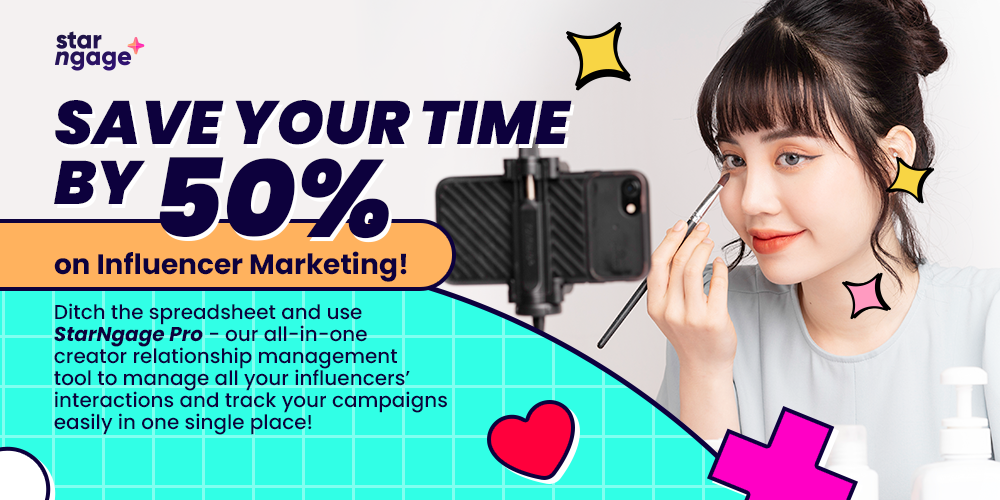-
With the penetration of about 40% in 2015, the internet users in Indonesia is expected to be around 160 million by 2020
-
As of April 2017, there are about 91 million Facebook users in Indonesia.
-
The digital advertising Industry is seeing a double digit growth year-on-year in advertising spending
-
According to eConsultancy, almost 60% of fashion and beauty brands have an influencer marketing strategy in place
-
According to eMarketer, 84% of marketers said they would launch at least one influencer campaign within the next twelve months
-
According to Google, 70% of teenage YouTube subscribers say they relate to YouTubers more than to traditional celebrities
-
According to Digital News Report, 47% of online consumers use ad blockers
-
Twitter has been overtaken by Instagram, which is now the second most popular social media network in Indonesia
-
50% of internet users are using Instagram in Indonesia, and there are 48 million of Instagram Users in Indonesia.
-
74% of consumers rely on social networks to guide their purchases
-
High return-on-investment for Instagram influencer where influencer marketing pays an average of $6.85 for every dollar spent
Why Influencer Marketing?
Did you know that Influencer Marketing generates $6.85 in return for every $1 spent ?
Brands looking into influencer marketing should take note of the trends in the industry in order to fully strategise their campaign. We have identified 3 prominent trends of influencer marketing coming 2017:
Trend #1: Emphasis Towards Content Marketing
In 2016, we have seen and experienced both the good and not-so-positive impact influencer marketing can bring to a brand. Some prominent mistakes made by brands include the overuse of influencers, selecting influencers irrelevant to your brand and so on. But one big mistake that should be avoided is the posting of content which is irrelevant to the audience.
Coming 2017, the emphasis on quality content will be largely noticeable. Content posted by Indonesia influencers not only have to be engaging and interactive, it also have to be new, natural, suited to the influencer and brand, shareable and encompasses a call-to-action to be able to reach out to a wide network of your target and produce positive results. Consequentially, brands which invest greatly in creating quality content will have an edge over the rest.
Trend #2: People-Centric Influencer Marketing
Most brands and marketers are focused on tapping on the hype of influencer marketing without considering the rationale behind those marketing efforts. In the upcoming year, it is crucial for brands to become more people-centric and focus on the audience when implementing each campaign.
Influencer marketing in 2017 will need to provide consumers with what they desire and explain how purchasing your product or service will add value to their life. With many marketers executing their marketing campaigns without much thought regarding their audience, being the first few to resonate with the audience will bring your brand ahead.
Trend #3: Indonesian Becoming Risk-Adverse
Being risk-adverse, Indonesia consumers are increasingly relying on influencers and word-of-mouth to decide on their purchases. This should be seen as an opportunity to leverage on the available influencers to bring about more sales through the online platform. To be able to leverage on influencer marketing to provide a form of reassurance for the consumers would definitely bring about positive impact on your brand's ROI.
Influencer marketing would hence be a great platform to reach out to the Indonesia market, especially the young Indonesian who constantly look online for reviews. These characteristics of the community is what make influencer marketing extremely effective in Indonesia.
How To Get Started With Influencer Marketing?
Did you know that Influencer Marketing generates $6.85 in return for every $1 spent ?
Reaching out to Influencer Personally or through Influencer Marketing Agency
You may ask, what are the various ways to engage Instagram influencers in Indonesia to perform influencer marketing? There are simply two options: businesses to reach out to influencers personally, or go through an influencer marketing agency.
On the surface, it may seem reasonable to reach out to influencers personally with the presumed low cost and easy reach. However, with the vast amount of influencers in Indonesia, each focusing on specific topics of interest, performing influencer marketing and liaising can be a real challenge. To execute an effective influencer marketing campaign, one should be sure to read up on the various aspect of influencer marketing from the various articles and ebooks available online.
Alternatively, an influencer marketing agency would be of great help in terms of identifying the right influencer for your marketing campaign, negotiating prices and measuring results.
Indonesia Fastest Growing Influencer Marketing Agency
StarNgage is an Influencer marketing and reporting platform allowing brands to customise, manage, launch, and measure digital advertising campaigns on Instagram. StarNgage empowers brands to partner and advertise with everyday influencers - the same way you would on search engines or social networks!
StarNgage provides 4 main services: Targeting, Identifying, Amplifying and Tracking.
How To Choose Your Influencer Marketing Goals and KPIs
Did you know that Influencer Marketing generates $6.85 in return for every $1 spent ?
The Most Common Influencer Marketing Campaign Goals
The Most Common Influencer Marketing Campaign KPIs
Reach
Can be measured based on the number of followers of influencers. Easy to measure, but the least valuable.Clicks
Easy to measure and one of the most important performance based metricsEngagement
Includes any social action (like, comment and share). Requires a hashtag or unique link for proper attribution. More value than a click.Conversion
Includes installs, sign-ups, form completions and purchases. Hardest to measure, requiring a pixel & unique link or a promo code for attribution.How To Choose Your Influencer Types
Did you know that Influencer Marketing generates $6.85 in return for every $1 spent ?
The Pyramid of Influence
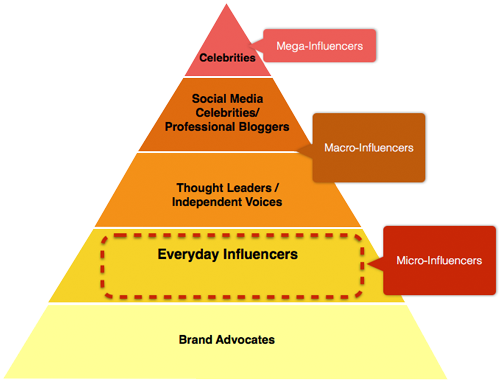
Get Our Influencer Rate Card Today!
A brand new way for you to compare the rates of influencers across the world.
Learn MoreSpectrum of Influencers
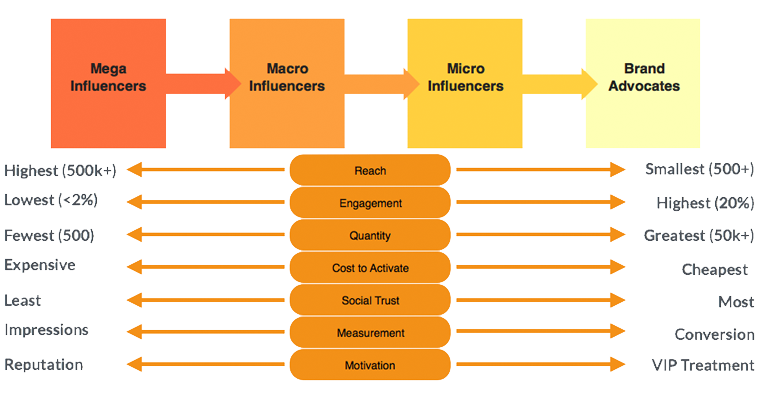
Social Media Influencer Landscape in Indonesia
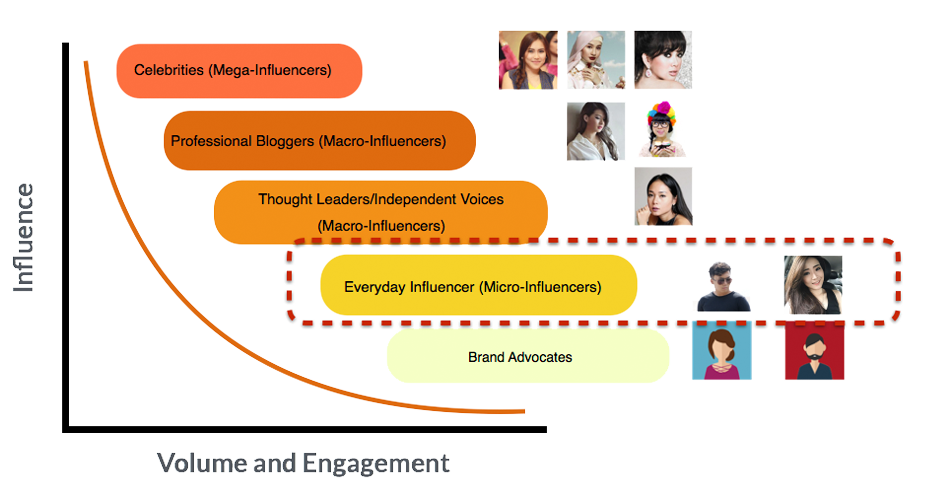
How To Choose Your Influencer Marketing Content Types
Did you know that Influencer Marketing generates $6.85 in return for every $1 spent ?
Plan Your Content Type Before Activating The Influencers
Brand Generated
Brand creates the content and influencers are activated to share it with their networks.- Pros: Influencers don't add any personalization; they simply share the content. Least risk.
- Cons: Less Creativity and personalization. Least impactful.
Co-Developed
Brand develops guidelines for the content and influencers create their own content based on adaptation. For example: “Share a picture of your selfie in Pacific Plaza”.- Pros: Moderate Impact Pontential
- Cons: Mild risk.
Influencer Generated
Content is generated by Influencers based on their creativity. Brand gives loose and generic direction.- Pros: Influencers have full creativity with loose guideline from brands. Maximum impact.
- Cons: Review process is needed as part of risk management as the risk is higher.
How To Choose the Right Incentive for Your Influencer
Did you know that Influencer Marketing generates $6.85 in return for every $1 spent ?
Plan Your Incentives Before Activating The Influencers
Types of Incentives
Cash
For most of the mega-influencers and macro-influencers, you will have to use payments for incentives. However for micro-influencers, some of them are open to receive VIP treatments and special branded incentives other than cash.VIP Treatment
When activating micro-influencers, the most popular incentive is an exclusive experience. This type of incentive works best when they are passionate about your brand. This could be in the form of a discount, gift card, limited product giveaway, VIP free trial etc.Recognition
Micro-influencers are more than happy to receive non-monetary rewards such as recognition. You can do this by featuring their content on your owned media such as Website or share their voices and give them a limelight on your social media channel.Common Incentives Ideas
- Exclusive Event
- Early Access
- Discounts
- Free Trial
- Contest Entries
- Gift Cards
- Experience Box
- Limited Product Sample
- Priority Service

